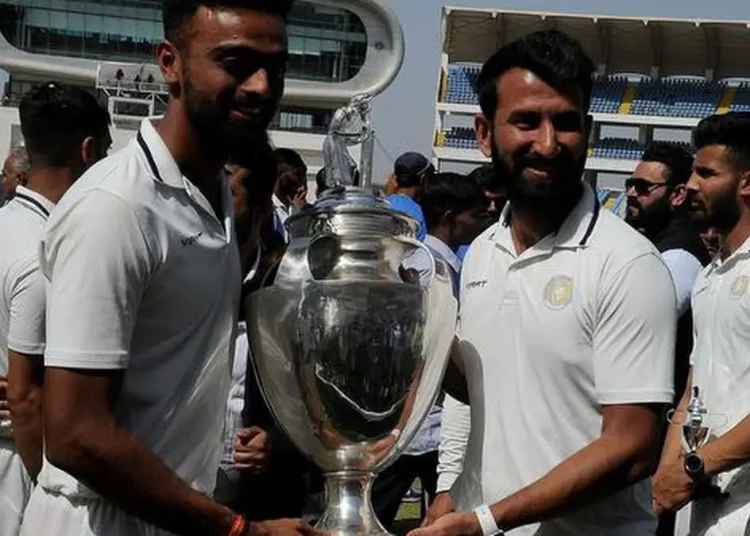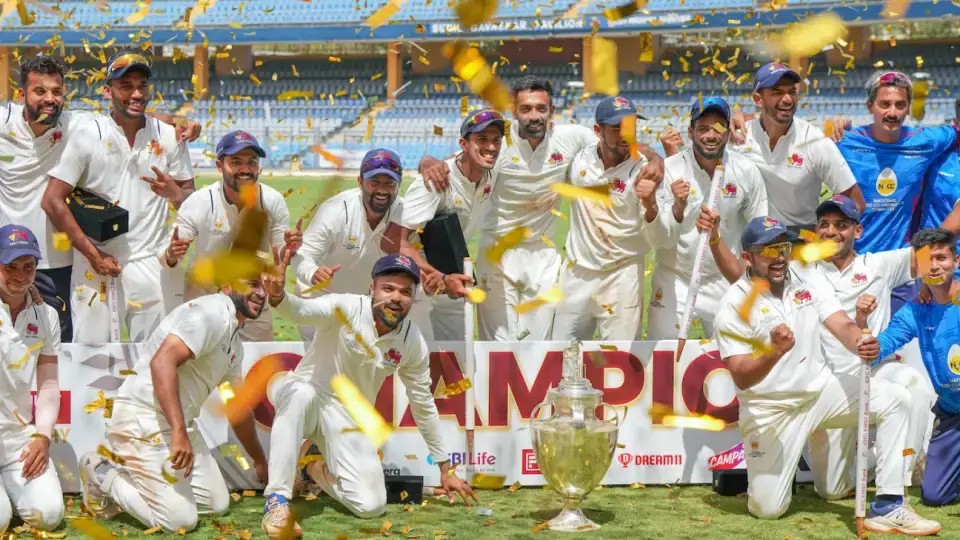The Ranji Trophy is still the backbone of Indian domestic cricket. It creates the stars we cheer for in IPL and international games. Every year, players across states battle hard in long matches. Their journey may not make headlines like IPL, but it’s more important.
The game teaches discipline, temperament, and real match pressure. Big players like Jasprit Bumrah and Suryakumar Yadav all passed through this fire. Without Ranji, Indian cricket would lack depth and toughness.
Many fans focus on flashy shots in T20 leagues. But behind every Suryakumar or Shami is a story from a dusty ground. Ranji is not just a tournament; it’s a test of heart.
This article will show how Ranji builds players. From coaching, culture, and payment to talent spotting, we cover it all. Read till the end. You’ll understand why this old tournament still builds legends.
Why Is the Ranji Trophy Still the Heart of Domestic Cricket?
The Ranji Trophy is not just another cricket tournament. It’s the base that supports the entire Indian cricket system. Every state team prepares for it with full focus. Players see it as their gateway to international cricket.
This tournament helps players understand real match situations. Test cricket requires patience. Ranji cricket builds that mental strength. You don’t get this in IPL or T20 matches.
Young cricketers play four-day matches here. That improves shot selection, footwork, and bowling consistency. Big names like Virat Kohli and Cheteshwar Pujara became strong through Ranji.
Selectors track performances here more than anywhere else. It tells them who can survive long innings. Ranji scores speak louder than T20 knocks in terms of skill. You need proper technique here.
Unlike IPL contracts, this is a test of dedication. Weather conditions, travel, and basic facilities — all challenge the player’s mindset.
Look at stars like Mohammed Siraj or Mayank Agarwal. They made their name through the grind. This structure shapes the temperament of true match-winners.
From the godfather of cricket to today’s captains, Ranji has made them. That’s why it still remains the heart of domestic cricket, like sri lanka bowlers.
Why Is the Ranji Trophy Still the Heart of Domestic Cricket?
The Ranji Trophy is not just another cricket tournament. It’s the base that supports the entire Indian cricket system. Every state team prepares for it with full focus. Players see it as their gateway to international cricket.
This tournament helps players understand real match situations. Test cricket requires patience. Ranji cricket builds that mental strength. You don’t get this in IPL or T20 matches.
Young cricketers play four-day matches here. That improves shot selection, footwork, and bowling consistency like Australia. Big names like Virat Kohli and Cheteshwar Pujara became strong through Ranji.
Selectors track performances here more than anywhere else. It tells them who can survive long innings. Ranji scores speak louder than T20 knocks in terms of skill. You need proper technique here.
Unlike IPL contracts, this is a test of dedication. Weather conditions, travel, and basic facilities — all challenge the player’s mindset.
Look at stars like Mohammed Siraj or Mayank Agarwal. They made their name through the grind. This structure shapes the temperament of true match-winners, like new zealand.
From the godfather of cricket to today’s captains, Ranji has made them. That’s why it still remains the heart of domestic cricket.
How Serious Are Players About Ranji Trophy Matches?
Many think Ranji is just a formality before IPL. But for most cricketers, the Ranji Trophy is their career goal. It’s their real chance to play for India in Tests. Players give everything here.
Every match is hard-fought. Batsmen spend hours at the crease. Bowlers try all tricks to get a wicket. This isn’t fun cricket. It’s gritty, slow, and tiring. Yet, it brings out the best in Indian players.
Ranji contracts are serious. A good season means India A call-ups, Duleep Trophy slots, and national attention. Even players with IPL contracts come back to play Ranji.
Take Hanuma Vihari or Sarfaraz Khan. Their selection came from big Ranji runs, not IPL hits. The selectors always value long innings over fast 30s.
Even bowlers like Mukesh Kumar and Arzan Nagwaswalla earned fame from this. Bowling long spells in red-ball matches is key.
Playing Ranji builds rhythm and control. This helps in all formats. That’s why even Shami, Siraj, and Bumrah go back to Ranji when fit.
So, yes — players care deeply. They treat Ranji like a final exam. One good season can change lives.
Why Ranji Is a Better Test for Bowlers Than IPL
IPL is great for fast money and fame. But Ranji is the true bowling lab. This is where bowlers learn patience. You can’t survive with just pace or tricks here.
A bowler must earn wickets. Flat pitches, long days, and heavy balls test everything. Seamers have to swing and hit areas. Spinners must bowl 25+ overs per day.
Mohammed Shami, Jadeja, and Kuldeep Yadav all sharpened their skills in Ranji. It trains the mind to set batsmen up. You get 90 overs per day, not just 4 overs.
In IPL, a bowler can bowl short, full, or wide and still get away. In Ranji, every ball matters. Batsmen won’t take risks. You must think, plan, and execute.
That’s why selectors notice Ranji spells more. A five-wicket haul here means something deeper. Not just conditions, but endurance, accuracy, and control.
Even spinners like Jayant Yadav, Saurabh Kumar, or Mayank Markande prove themselves here. It’s tough. But the results stay long-term. If you’re a bowler dreaming of India Test cricket, Ranji is the best test.
Why IPL Hype Can’t Replace the Ranji Grind?
IPL gives quick fame, but not long careers. It’s a T20 circus with sixes, music, and lights. Ranji is the true cricket school. You face all types of challenges.
In IPL, failure gets hidden under team rotations. But in Ranji, you must perform in every match. No shortcuts. That’s why it builds stronger minds.
Suryakumar Yadav struggled in the early IPL. But his consistency in Ranji helped him bounce back. The same for Ruturaj Gaikwad and Abhimanyu Easwaran. They all scored big in the Ranji first.
IPL teaches aggression. Ranji teaches survival. IPL rewards moments. Ranji rewards endurance and class.
Even team scouts say Ranji reveals a player’s heart. You’ll see who gives up and who stays strong.
IPL might bring money, but Ranji brings respect. Without Ranji, India wouldn’t have proper red-ball depth.
How Indian Coaches and Scouts Spot Talent Through Ranji
India’s cricket scouting system starts at the Ranji level. Most coaches track young players from under-19, club, and zonal matches. But it’s Ranji that reveals their true ability.
Scouts look for temperament, not just shots or speed. A hundred in a low-scoring game, or a long bowling spell, impresses more than flashy scores.
VVS Laxman, Dravid, and others at NCA always stress Ranji performance. The current India A setup is built around the Ranji format.
Many young players, like Priyansh Arya, got their chance by scoring consistently in Ranji. Even bowlers like Tushar Deshpande and Yash Dayal rose from strong seasons.
Selectors attend most games. They talk to coaches, captains, and watch match footage. A solid year in Ranji can lead to Duleep Trophy, India A, or even Test squad calls. So, Ranji is not just a game. It’s a national gateway. Every over is watched. Every inning is counted.
Conclusion: Ranji Trophy Still Matters More Than Ever
The Ranji Trophy isn’t old-school — it’s timeless. While IPL dazzles the world, Ranji builds the base. It makes tough cricketers. It teaches players to fight, survive, and grow.
You may not see cheerleaders here. But you’ll see real heroes. Players with dreams, discipline, and determination. That’s what Indian cricket needs.
From bowlers like Siraj to batters like Gill, everyone began here. No wonder selectors still value these matches. Ranji trains players for Tests, not just T20s.
As fans, we must support this grind. It’s where the next greats are born. The next Dravid, the next Kumble, or maybe the next Jasprit Bumrah.
If India wants to stay strong in all formats, the Ranji Trophy must stay strong. Let’s respect the roots that power our cricket tree.






